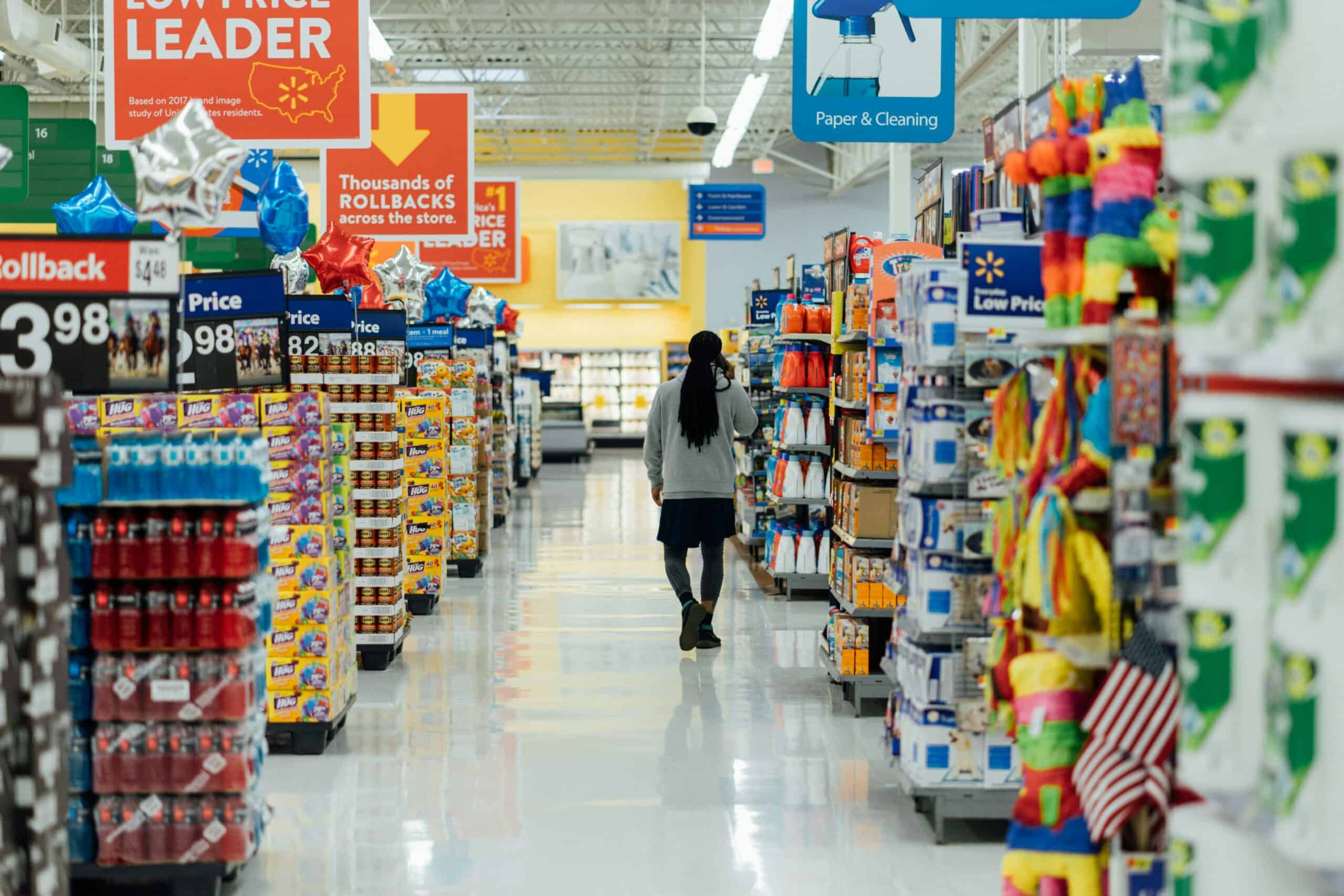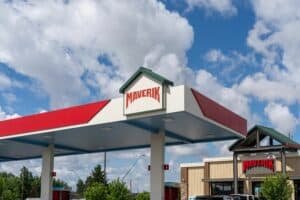
Photo by Hanson Lu on Unsplash
January 16, 2025
Is Grocery Store Price Gouging a Concern — and Was It Real in the First Place?
An almost universal complaint among American consumers coming from all walks of life: the price of groceries. Whether one is working class, middle class, upper class, or belonging to the jetsetting crowd, the price of eggs, milk, meat, bread, and other staples was hotly debated as COVID-19 began a steep climb in prices.
Supply chain issues were set against corporate greed in the popular narrative as two tales spun out differing stories of what had happened at the checkout, but the reality remained simple enough — groceries had surged in price. Who was to blame, and why?
Grocery Prices Skyrocketed, but Are Grocers Entirely To Blame?
Although food prices are stabilizing as the true aftermath of the COVID-19 pandemic continues to settle, the effects of past surges are still being felt. According to the latest U.S. Bureau of Labor Statistics data from December 2024, food-at-home prices have leveled off with a year-over-year inflation rate of 1.8%, while food-away-from-home prices are sitting at double that rate, 3.6%. However, the reality is that grocery prices surged over a very short period of time during the pandemic and have not relented since.
According to NPR, grocery prices soared by 25.6% between February 2020 and July 2024, outpacing even the breakneck pace of overall inflation during that period, which stood at a remarkable 21.6%.
Democrat Bob Casey, a former Pennsylvania United States senator only recently defeated in the Nov. 5 election by the narrowest of margins, spoke to the case of then-constituent Erin Wiggle via The Guardian. Casey’s September 2024 op-ed cast light upon the plight of many Americans embittered by the cost of essential goods.
“Erin is right. Under the cover of inflation, companies have raised the prices of everyday household items to rake in record profits at the expense of American families. As my investigation into what I’ve called ‘greedflation’ shows, from mid-2020 to mid-2022, corporate profits rose by 75% — five times as fast as inflation. In fact, corporate profits jumped so much that they played a major role in causing inflation — according to the Federal Reserve, corporate profits accounted for all the inflation from July 2020 through July 2021 and 41% of all inflation from July 2020 through July 2022,” Casey wrote.
Data Suggests Grocers May Simply Be Passing Macroeconomic Cost Burdens Along, Without Profiteering
Coming from the same NPR report mentioned above, however, is data suggesting that grocers may not be profiteering as deeply as consumers might believe. While grocery shoppers stand in shock over the ever-increasing costs of filling their carts, grocers may simply be following the market.
“Companies’ financial disclosures cover global operations, meaning lots of variety in costs and prices. But for almost all companies that NPR analyzed, between 2018 and 2023 the margins either declined or grew less than 1%,” NPR reported, including sector giants such as Walmart, Pepsi, Kroger, and Kraft Heinz.
This point was underscored by New York Federal Reserve researcher Thomas Klitgaard and former chief economist at the White House Council of Economic Advisers, Ernie Tedeschi.
“Even though profit margins for grocery stores have gone up,” Klitgaard wrote in a July 2024 report, “the increase appears to be only a small contributor to the rise in food prices relative to the increase in their operating costs.”
“Grocery was different” from the remainder of the broader retail sector, Tedeschi indicated. “Grocery didn’t pop as quickly in the depths of the pandemic, but it rose sort of like a slow burn and it stayed tenaciously higher.”
NC State University’s Poole Thought Leadership’s take fell into a similar vein. Indicating a near 1:1 translation of input prices (excluding labor and capital) versus output prices for food and beverage retailers, the think tank indicated that consumer sentiment on this score was perhaps misplaced.
“Note that, for the first half of 2024, there’s a near-perfect 1:1 relationship between the two series, indicating that output prices have risen at the same pace of input prices. This is entirely consistent with cost pass-through, not price gouging,” the scholars indicated.
“In other words, this data suggests that food and beverage stores are passing their own rising costs on to consumers — not raising prices excessively,” they added.
President Donald Trump Elected, at Least Somewhat, on the Back of Inflationary Concerns
It’s hard to deny the ultimate power of inflation in deciding political futures, however.
As CNN detailed, an impressive 96% of those polled cited “high prices for gas, groceries and other goods” as a motivator as to how they cast their ballots in the most recent presidential election. Trump would win a persuasive victory as a result of targeting post-COVID inflation as one of his key issues.
Whether the incoming administration can address the persistent, though calming, issue of price inflation regarding essential goods remains to be seen.
Discussion Questions
Did U.S. grocery stores actually gouge American consumers, or were they generally passing along operational costs?
What can grocers do to assure their customers that they are “playing fair” with them, especially during a time of natural distrust?
Which grocers or grocery brands succeeded in navigating the inflationary environment without negative consequence? In contrast, which brands suffered the most?
Poll
BrainTrust
Shep Hyken
Chief Amazement Officer, Shepard Presentations, LLC
Neil Saunders
Managing Director, GlobalData
Lucille DeHart
Principal, MKT Marketing Services/Columbus Consulting
Recent Discussions







“Inflation?”
Very few companies control a huge proportion of American food companies, and they can raise prices at will. The only way for consumers to fight back is to refuse to purchase boxes of cereal that cost more than $6.99, $6.00 bread, and other obviously price-gouged food items. This is not a normal market.
Customers are not gouged by grocery stores. They are simply responding to higher inventory prices.
It is no longer possible to source products at the same rates as before. The price increases simply results in customers being charged more.
Here are some examples of grocery store pricing and cost issues:
1) Consumer goods have risen by an average of 23% since January of 2021.
2) Grocery stores have been pressured to raise salaries higher than their business models allow, so they must recover the difference in their prices.
3.) As much or more than any other type of retailer, grocery stores are affected by the rising costs of gasoline, energy, utilities, logistics, etc.
Has there been price gouging at the grocery store? According to the article, the answer is clearly, “Yes”, “No”, and “Well, maybe sometimes”. Most brands and grocers could probably craft an answer that says, “Gosh, of course not!”. And most customers would probably answer, “OMG…absolutely!”. Feels like this question needs to be asked and answered a lot more surgically>
My off the cuff opinion is that the suppliers to grocers took a nice extra bit of profit and the grocers piled on. The grocers didn’t invent shrinkflation….that’s pretty gouge-like. But I also know Publix profit increase far outstripped its revenue increase last year….so clearly they were taking advantage. It’s not like they place order a year ahead of demand. The lag time isn’t like it is in apparel.
So it’s some price gouging and some victimization by its suppliers.
Agree. If Kroger had all kinds of cash ready to buy Albertson’s, then they can’t complain about margins.
Publix’s net income increased by 43% in 2023. The vast majority of this came from net unrealized gains on equity securities, not from operations. Excluding these gains, net income increased by just 1%. This is lower than the 4.7% increase in sales for the year. In other words, they’re not profiteering. Far from it!
I’m always puzzled as to why RetailWire persists in making price gouging an issue for retailers, rather than manufacturers (well maybe “puzzled” isn’t the right word: it does so because (1) It’s Retailwire, and (2) that’s who the Public usually points the finger at; so maybe “disappointed” is the better word).
As others here have noted – or soon will – people will take advantge of you, but only if you let them: shop around…if one store, or brand has (what you feel are) high prices, then they’re gouging; if everyone does, then no one is.
EXACTLY
Blaming supermarkets and grocers for price increases was a fiction promulgated by those largely responsible for inflation: politicians. Operating margins for grocery retailers averaged 3.80% in 2015. In 2021 they were 3.74%, in 2022 they were 3.87%, and in 2023 they were 3.42%. This tells you two things. First, there has been no profiteering; price increases are merely retailers passing across their own cost increases. Second, grocery remains one of the thinnest margin categories in retail and it requires immense efficiency and discipline to extract a profit.
As for former Senator Bob Casey…
He claims that between June 30, 2020, and June 30, 2022 Amazon has increased its profits by 61%, Target by 31.7%, and Walmart by 10%.
Now, I don’t know what data he is looking at, but here are the numbers for the full fiscal year 2022 versus 2020:
Target:
Sales increase: +16.6%
Operating profit increase: -41.2%
Operating margin (2020 / 2022): 7.0% / 3.5%
Walmart US:
Sales increase: +13.7%
Operating profit increase: +7.9%
Operating margin (2020 / 2022): 5.2% / 4.9%
Amazon (North America, excludes AWS):
Sales increase: +33.7
Operating profit increase: -132.9
Operating margin (2020 / 2022): 3.7% / -0.9%
This doesn’t show profiteering over the period. It actually shows the exact opposite: deteriorating profitability!
This is basic economics. The pressure on oil companies and limits on fossil fuels caused a spike in traditional fuel/energy costs which impacted everything throughout the food supply chain. From farm machinery to transportation to stores, energy increases caused the price of food to escalate beyond traditional supply and demand. There was no universal price gauging (although shrinkflation has been around to maintain some pricepoints). Supermarkets/grocers operate on very small margins to begin with (2%) and cannot afford to absorb more external pricing pressures. Private labels did fare better than name CPG brands due to vertical development and higher margins up front. Winners were dollar tree (for canned and basic foods) and Walmart–as usual.
In the past, corporate profit growth accounted for maybe a third of inflation. But a report from the Kansas City Fed found that nearly 60% of inflation in 2021 was because of corporate profits. Business as usual. Companies love the cover of inflation.
Nobody likes to see prices go up (noticeably). When it happens, there are bound to be complaints. Any retailer (and in today’s conversation, grocers) can charge what they want. The competition will help keep retailer pricing honest and competitive. The only way one could possibly make the statement that “every” grocer is price gouging would imply there is a conspiracy or price-fixing in play – and to my knowledge, that isn’t happening here.
There is a cost to do business. A grocery store buys from manufacturers and distributors. When their costs go up, it is reflected in the retail price. Customers feel it. This is the way it has always worked and will continue to work.
There wasn’t, nor still isn’t price gouging by grocers. That is a crafted, lazy assumption made by media and government officials responding to voters feeling inflationary pressures.
Grocers largely just pass on costs from the supply chain as they come, sticking to tight formulas. Any other increases at store level from wage costs, construction labor/materials, operations and supplies, those will also get reflected in retail price increases to keep up with thin 3% operating margins.
One example of a grocer pushing back on cost spikes and bringing customers into the fold comes from Grocery Dive Jan-16, titled “Why an independent grocer is holding the line on egg prices”. Labonne’s CEO Bob LaBonne Jr value priced an egg brand at $3.99, at a 10%-15% margin, essentially a profit loss as dairy items need to be 25%-30% to make a bottom line contribution. When grocers take an open book approach like this, it creates loyal customers while refuting lazy assumptions from the outside.
Agreed, there are some absolutely appalling and incredibly lazy assumptions and narratives around this issue!
And I know several grocers who don’t want to publicly state their frustrations about this, carrying over into a squabble with media or politicians. Not worth it. Most just want to quietly serve their customers and community.
First, inflation overall is always caused in large part by Government spending and / or printing money.
Second, price gouging is an issue completely fabricated by our chattering political class for the purpose of political gain. And I love the use of the word “fair” as in “fair prices” or “playing fair”, which combined with “gouging” immediately frames the issue as one of businesses taking advantage of consumers, which of course leads to the Federal Government to the rescue.
Do pricing abnormalities occur? Sure they do. Do they occur to the degree Washington wants us to believe? No, no and no.
Grocery price gouging is a pretty hard trick to pull off. People forget their PIN numbers but know to the penny what they pay week to week for milk, eggs, bananas, etc.
The FMI reports that grocery store net after-tax profits peaked in 2020 at 3.0 percent. By 2023, that statistic had settled back to 1.6 percent. It’s important to keep this metric in mind as we consider claims of price-gouging.
Yet there is no doubt that retail prices on many frequently-purchased “known-value” grocery items (KVIs) rose by double-digit amounts during the same time span – and they have stayed high. The reasons: producer costs rose, some shortages occurred, and manufacturers built those factors into their prices. a few reduced pack sizes to try to hit acceptable price points, and savvy consumers eyed this with appropriate suspicion.
Grocers passed along their cost of goods for the most part, which was reflected in shelf prices. They took a few KVI loss-leaders too – to send a message to shoppers that they were on their side. Manufacturers also scaled back on promotional activity for a while – it made no sense to offer incentives for products that were in short supply.
Prices have leveled off considerably in the past year, but shoppers still remember what their baskets cost them in 2019. Every checkout triggers a flashback. No wonder they are angry.
This collective anger enabled what I considered to be the most ludicrous campaign promises of the past election. Both sides tried to convince the voting public they would reduce grocery prices in the next administration! Of course this is an absurdity. Grocery prices have never declined in our lifetime, and short of a devastating economic depression, they never will.